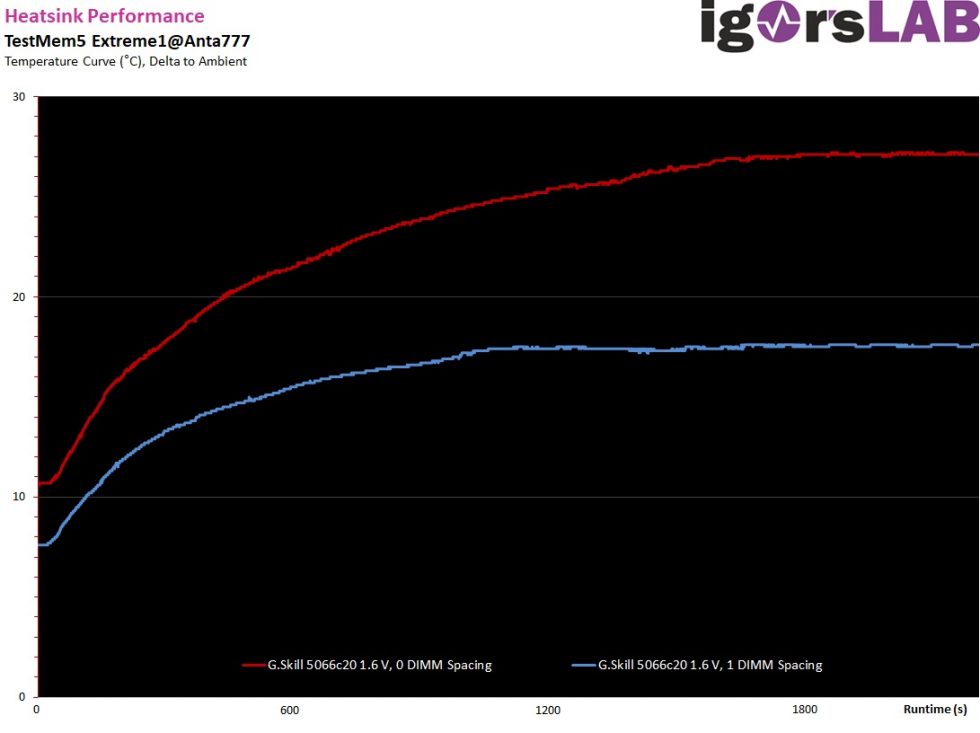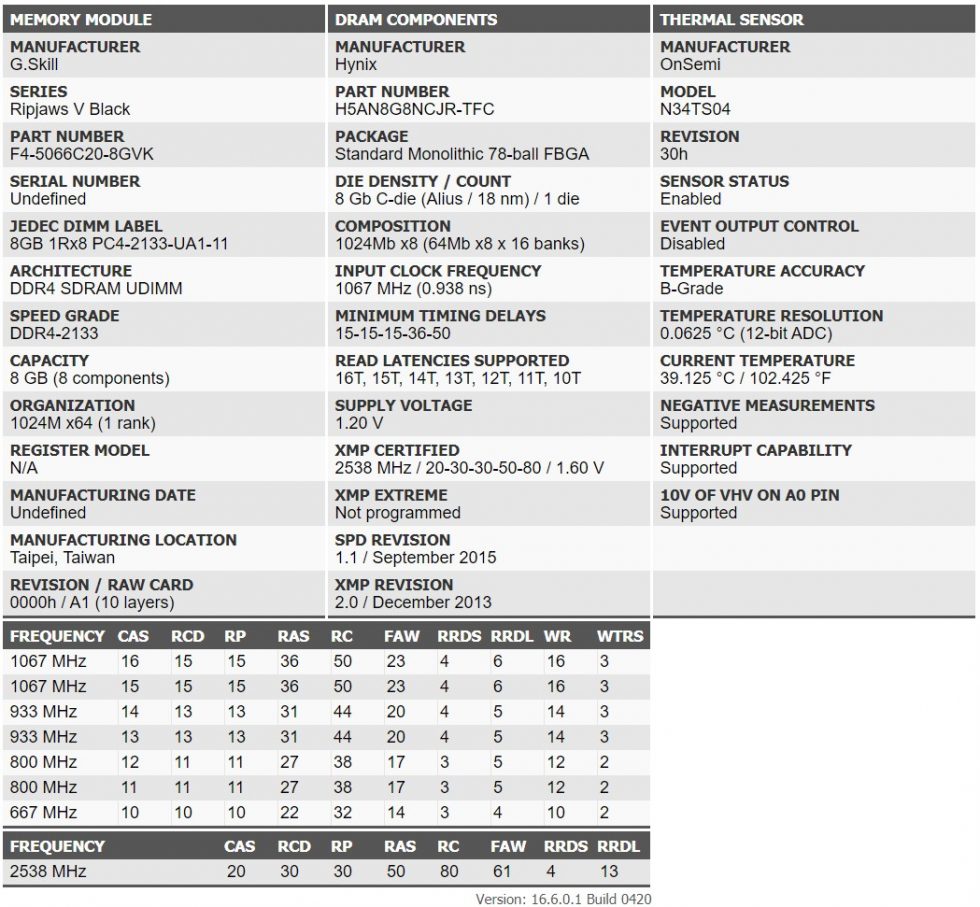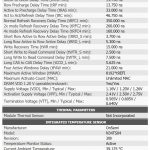The spartan heatspreader now has to prove itself in our heat test and show whether it can also reliably dissipate the heat from the 1.6 V RAM voltage. The RAM stability test Testmem5 in version 0.12 and with the profile Extreme1@Anta777 is used again for this, with which the highest possible thermal load can be simulated. The modules are operated with their XMP specifications for 40 minutes until they reach their maximum temperature according to experience or, in the worst case, become unstable. The modules are installed horizontally on a testbench and do not experience active airflow.
The temperature of the warmest module is measured in the middle of the PCB on the side with the memory ICs between PCB and heatspreader, once on a setup with a DIMM slot distance between the two modules (1 slot spacing), once directly next to each other (0 slot spacing).In addition, a further type K thermocouple measures the ambient temperature, so that the delta can be determined from both and thus the performance of the heat sink can be concluded. The values are logged by means of an Elmor KTH thermometer with a sampling rate of 64 Hz.
If the modules are installed directly next to each other, the warmer one reaches a temperature of approx. 27 °C above the ambient temperature after just under half an hour. If the modules are spaced one slot apart, the delta settles at approx. 18 °C after 20 minutes. Despite the 1.6 V operating voltage, the temperatures are completely within reason and even better than some RAM kits with more massive heatspreaders. But maybe the advantage of the Ripjaws V lies in the simpler and thinner construction, because fresh air can get between the modules easier and dissipate the heat, even if only passively.
In Serial Presence Detect, or SPD, each module on the PCB carries information about itself and its characteristics. To read this we use Taiphoon Burner, which can interpret the values and display them in HTML format. In addition to the XMP profile, there is often further information here that can be useful for the operation and possible overclocking of the modules.
Starting in the left column, you will find the individual part number of a module in addition to the manufacturer and name of the product series. Two F4-5066C20-8GVK modules together are therefore a F4-5066C20D-16GVK kit. Furthermore we find here the confirmation to the A1 PCB layout and the organization of the modules into a single rank, consisting of 8 memory chips with a width of 8 bits each. The 10 layers of the PCB can also be found here.
The middle column contains information about the memory ICs used, and the readout software lives up to its community nickname, “Thaiphoon Guesser”. While we could clearly recognize SK Hynix DJR on the PCB, the software here indicates CJR or C-Die as the IC used. So here either the information in the SPD is incorrect, or – what I think is more likely – we have found a bug in the Thaiphoon Burner software. The only really useful information here is the XMP profile, which is detailed in the table below next to the JEDEC profiles.
In the right column we find information about the integrated temperature sensor, which G.Skill conveniently recurringly provides for its high-end DDR4 modules. This is implemented together with the SPD-Eprom in a package, in the form of an N34TS04 from OnSemi. This is highly commendable, especially for kits with relatively high operating voltages where the risk of temperature-related instability is higher. With the integrated sensors, which can be easily read out in mounting tools such as HWInfo, such instabilities can then be diagnosed with ease. Thanks, G.Skill.
The complete XMP profile contains the frequency of 2538 MHz, timings tCAS 20, tRCD 30, tRP 30, tRAS 50, tRC 80, tFAW 61, tRRD_S 4 and tRRD_L 13 and the RAM voltage 1.6 V. All further detailed information can be found in the following complete SPD report. To do this, click on the image, right-click, open in a new tab and then zoom and scroll there. 😉




































10 Antworten
Kommentar
Lade neue Kommentare
Mitglied
Mitglied
Urgestein
Veteran
Urgestein
Mitglied
Mitglied
Veteran
Alle Kommentare lesen unter igor´sLAB Community →